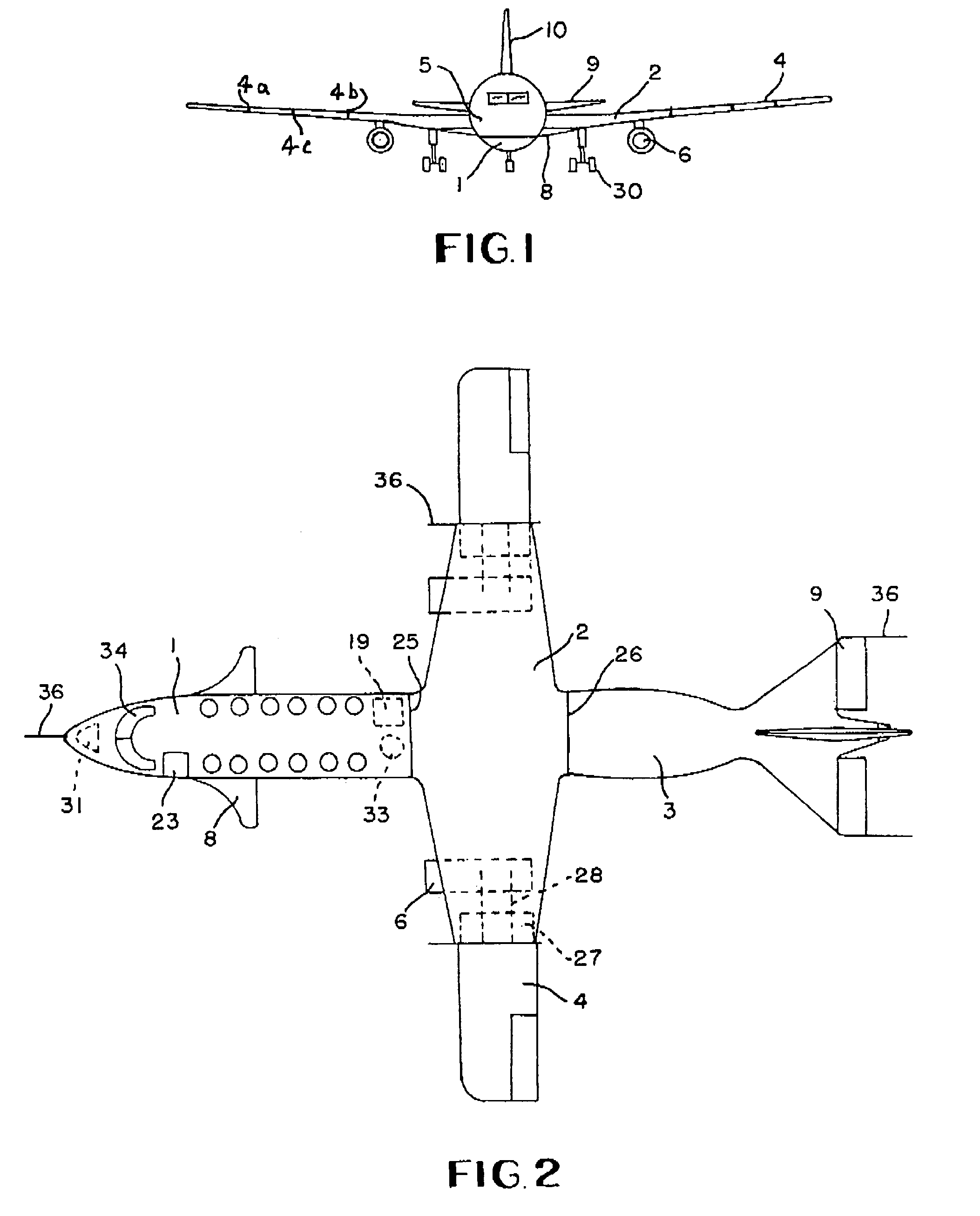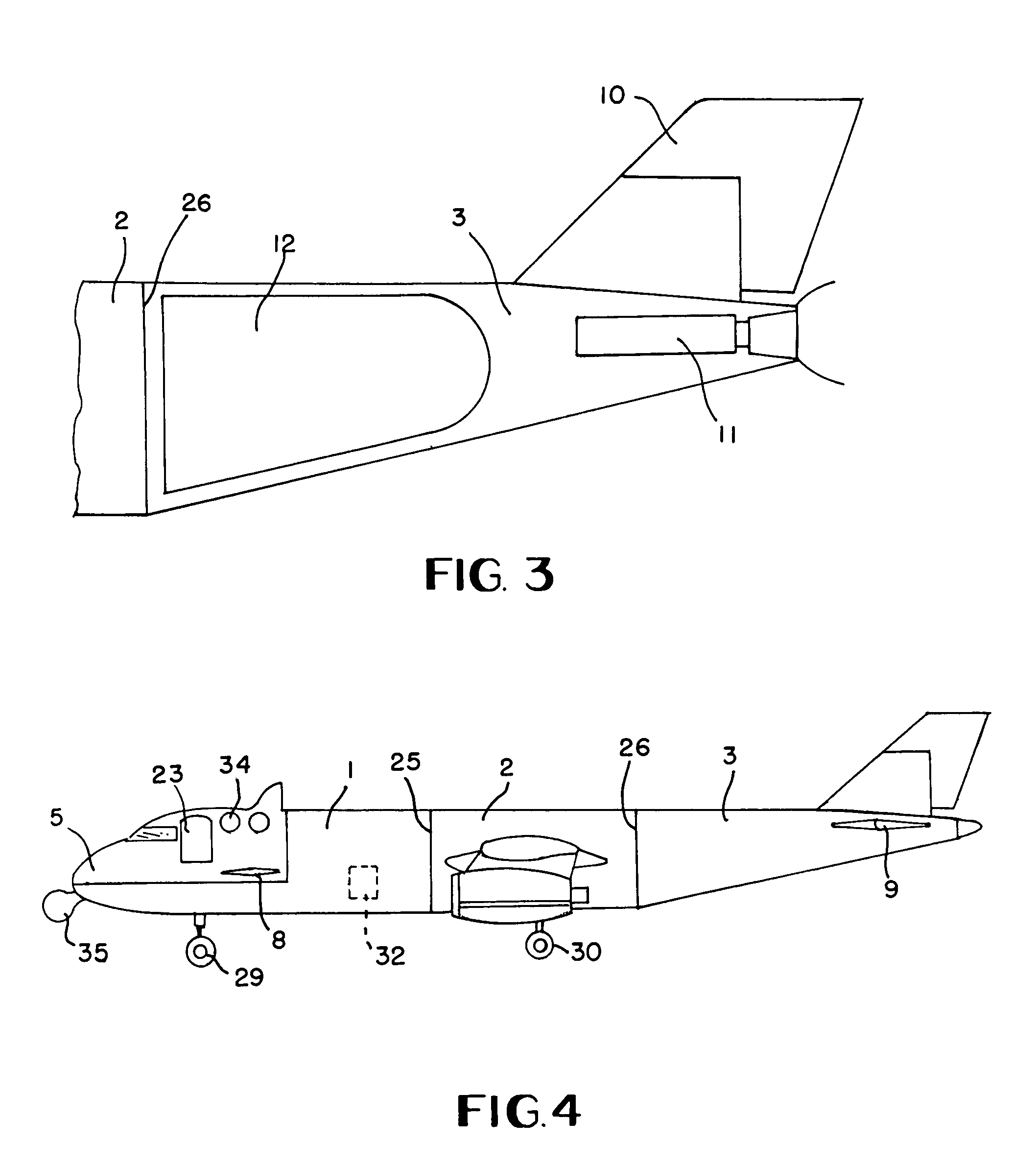Modular aerospace plane
a technology of aerospace planes and modules, applied in the field of modules, can solve the problems of reducing supersonic performance, major shifts in aerodynamic balance, safety and technology challenges, etc., and achieves the effects of reducing manufacturing costs, improving safety, performance and versatility, and minimal sonic boom disturban
- Summary
- Abstract
- Description
- Claims
- Application Information
AI Technical Summary
Benefits of technology
Problems solved by technology
Method used
Image
Examples
Embodiment Construction
[0036]With reference to FIG. 1 of the drawings, the illustrated vehicle demonstrates the relative position of the four lifting surfaces, the canard 8, the main wing 2, the wing attachments 4 and the elevators 9. Numerals 4a, 4b and 4c in FIG. 1 designate the wing tips of wing attachment 4 which are of varying lengths. The location of these flight surfaces will have a beneficial effect on each other to improve lift, aerodynamic performance and balance. In level cruise attitude, the frontal cross section area of the canard and the elevator disappear into the main wing to minimize drag and sonic disturbance.
[0037]The configuration of the Stable Center of Lift (SCL) main wing design will restrict movement of the center of lift, permit the utilization of the wing attachments 4 and reduce cost. For purposes of flight control, ailerons 4a are mounted on wing attachments 4. In order to offer improved aerodynamic balance and efficient aerodynamic control, the main wing section 2 is also conf...
PUM
 Login to View More
Login to View More Abstract
Description
Claims
Application Information
 Login to View More
Login to View More - R&D
- Intellectual Property
- Life Sciences
- Materials
- Tech Scout
- Unparalleled Data Quality
- Higher Quality Content
- 60% Fewer Hallucinations
Browse by: Latest US Patents, China's latest patents, Technical Efficacy Thesaurus, Application Domain, Technology Topic, Popular Technical Reports.
© 2025 PatSnap. All rights reserved.Legal|Privacy policy|Modern Slavery Act Transparency Statement|Sitemap|About US| Contact US: help@patsnap.com



